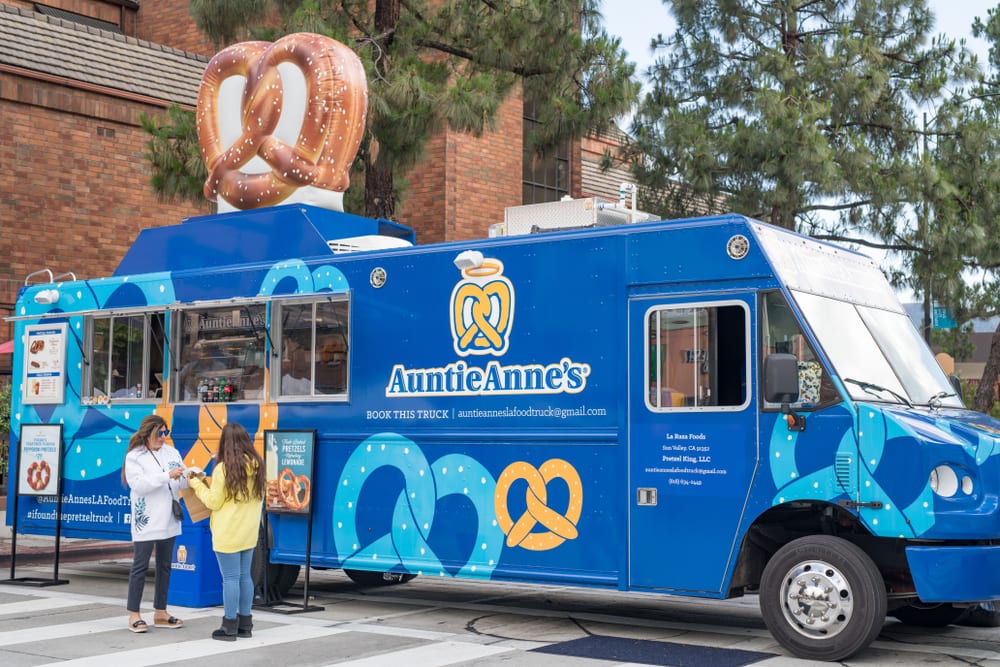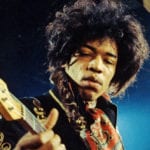 Religion
Religion  Religion
Religion  Weird Stuff
Weird Stuff 10 Horrifying Final Destination-Like Accidents
 Movies and TV
Movies and TV 10 Music Biopics That Actually Got It Right
 History
History 10 Momentous Events That Also Occurred on July 4th
 Animals
Animals 10 Times Desperate Animals Asked People for Help… and Got It
 Movies and TV
Movies and TV 10 Movie Flops That Found Their Way to Cult Classic Status
 History
History 10 Things You Never Knew About Presidential First Ladies
 Movies and TV
Movies and TV 10 Zombie Movies That Will Actually Terrify You
 Humans
Humans 10 Times Scientists Were Absolutely Sure… and Absolutely Wrong
 Our World
Our World 10 Pivotal Moments for Life on Earth
 Religion
Religion 10 Innovations and Discoveries Made by Monks
 Weird Stuff
Weird Stuff 10 Horrifying Final Destination-Like Accidents
 Movies and TV
Movies and TV 10 Music Biopics That Actually Got It Right
Who's Behind Listverse?

Jamie Frater
Head Editor
Jamie founded Listverse due to an insatiable desire to share fascinating, obscure, and bizarre facts. He has been a guest speaker on numerous national radio and television stations and is a five time published author.
More About Us History
History 10 Momentous Events That Also Occurred on July 4th
 Animals
Animals 10 Times Desperate Animals Asked People for Help… and Got It
 Movies and TV
Movies and TV 10 Movie Flops That Found Their Way to Cult Classic Status
 History
History 10 Things You Never Knew About Presidential First Ladies
 Movies and TV
Movies and TV 10 Zombie Movies That Will Actually Terrify You
 Humans
Humans 10 Times Scientists Were Absolutely Sure… and Absolutely Wrong
 Our World
Our World 10 Pivotal Moments for Life on Earth
Top 10 Iconic Things With Criminal Beginnings
One does not have to be a great person to do great things. Some of the most famous things in the world got their start by people being in the wrong place at the wrong time. Some of these people were the victims of crimes. Others instigated the wrongdoings. Either way, once the troubled settled, the following 10 people went on to shape the world.
Top 10 Secrets Of Iconic Hollywood Sounds
10 The Travels of Marco Polo

Physically confined, Marco Polo’s only freedom was in his mind. He could recall plenty of adventures. In 1269, Polo traveled across Asia. Twenty-four years later, he finally returned to his native Venice. Before he arrived, Venice declared war on neighboring Genoa. Barred from entering the city, Polo and his crew assaulted Geneon authorities.
In prison for the attack Marco Polo passed the time by telling his cellmate, Rustichello of Pisa, of his exploits in China. Rustichello wrote down the tales that eventually became the travelogue, “The Travels of Marco Polo.” To entertain themselves, Polo and Rustichello made some facts up. A bestseller immediately upon release, audiences were exposed to Asian cultural norms for the first time, like paper money and pasta. Additionally, the learned of mysterious lands inhabited by cannibals, unicorns, and people with dog shaped heads.
Polo’s detailed account of Kubla Khan’s stately pleasure-dome have inspired people for centuries, even outside of pool party attendees,. Artists, like the equally talented Samuel Taylor Coleridge and Olivia Newton John, based works on Polo’s exploits. Christopher Columbus’ heavily dogeared copy was a motivating factor for his historic 1492 voyage.[1]
9 Mars Candies

By most measures, Frank Mars was a failure. Forrest Mars was a success. Yet, Frank was the one bailing his son out of jail that night in Chicago.
Frank did not live a life as sweet as the candy that eventually bore his name. He got into chocolatiering out of necessity. Immobile due to childhood polio, Frank made deserts with his mother. That early interest in confectionary arts fostered a lifelong passion for candy. In the early 1900’s, he strained his marriage to Ethel Kissack by marketing the candy Mar-O-Bar. The struggling entrepreneur lost two businesses and a marriage. Divorcee Ethel moved her and their son, Forrest, to Canada.
Forrest Mars, contrarily, was a too zealous salesman. After studying business at Berkeley and Yale, he made thousands advertising for Camel cigarettes. One assignment was to guerilla market in Chicago. Forrest went overboard and plastered ads on light posts around town. The police arrested him for vandalism.
With his last remaining four hundred dollars, Frank bailed out his estranged son. The encounter rekindled their relationship. While drinking milk shakes, Forrest suggested his father add malt to his chocolate. Named after the cream used in nougat, the candy bar was dubbed “Milky Way.” Milky Way was the first in a constellation of notable candy bars produced by the company. Mars additionally makes Three Musketeers, Snickers, and M&M’s.[2]
8 Griffith Observatory
Griffith J. Griffith, the man so nice they named him twice. However, not nice enough that he did not try to kill his wife.
The oilman turned benefactor gifted generations of Angelenos acres of open space in his namesake Griffith Park. His good will abruptly ended in 1903. While vacationing in Santa Monica, Griffith told his wife, Mary Agnes Christina Mesmer, “get your prayer book and kneel down…. I’m going to shoot you.” This was no idle threat. Paranoid from alcoholic delusions convinced Griffith his wife had conspired with the Pope to poison him. Miraculously, Mesmer survived a gunshot to the eye at point-blank range. Fleeing her abusive husband, she leapt from the third-story window. An awning underneath conveniently broke her fall. She crawled to safety through the broken glass of a nearby window. Mesmer clung to life. Griffith went back to drinking.
Claiming “alcoholic insanity,” Griffith’s charges were reduced to assault with a deadly weapon. He spent two years in prison. To rebuild his reputation, Griffith tried to donate more landmarks to Los Angeles. The city initially rejected his 1912 offer of $100,000 to construct Griffith observatory. Upon his death in 1919, Griffith willed the city the necessary funds.
Despite initial reluctance, Hollywood has certainly embraced the observatory since its 1935 inception. A complete list of movies and TV shows that have incorporated the building in some capacity would take forever to recount. Notable appearances include the location where Arnold Schwarzenegger’s Terminator first arrives, the entrance to Toontown in Who Framed Roger Rabbit?, and the levitation scene in La La Land. No movie cemented the Observatory in popular consciousness more than Rebel Without a Cause, where multiple crucial plot points took place.[3]
7 The Periodic Table of Elements

There’s a reason his title was King Augustus the Strong, and not Augustus the Smart. In 1701, the Polish monarch was tricked by small time con-artist Johann Friedrich Böttger. Böttger signature trick as a magician was pulling out two silver coins, which then disappeared and reappeared as a single gold piece. Augustus the Strong took this as proof that Böttger had mastered the art of alchemy. To preserve the scientific breakthrough, Augustus jailed the magician until he revealed his secrets.
Of course, Böttger was caught in a lie. Angered that he was bamboozled, Augustus the Strong threatened to execute Böttger. To spare his life, Böttger made up a new lie. European leaders had long wanted to end China’s monopoly on porcelain. Böttger claimed he knew how to make it. Luckily for Böttger, he teamed up with Ehrenfried Walter von Tschirnhaus, one of the few European scientists researching porcelain. Walter von Tschirnhaus pioneered a special oven that could melt porcelain down. The duo discovered it was comprised of kaolin clay and feldspar rock. Instead of securing his freedom, Böttger’s insight was so valuable he was placed under even stricter security.
The ability to manufacture porcelain immediately reshaped the European and Chinese trade balance. However, the true consequences of the demand became evident only decades later. Feldspar mines opened around the continent. One of them, Sweden’s Ytterby mine, had unique geologic deposits that produced distinct pigments, a sure sign of lanthanides.
Samples chemist Johan Gadolin isolated seven elements from Ytterby now bearing the name of the Swedish village. The unearthed elements filled key missing gaps Dmitri Mendeleev needed to finalize the periodic table.[4]
6 Auntie Anne’s Pretzels

Auntie Anne’s history is as twisted as their trademark pretzels. The mall food court staple was established to offer financial and spiritual support following heartbreak. The titular Anne was the Amish born Anne Beiler. In her mid-20’s, Beiler’s infant daughter, Angela, died in a farm accident. In 1975, a runaway tractor struck the 19-month old. Both parents were thrown into a deep depression. Their marriage dissolved and Anne openly contemplated suicide.
She thought she could find relief in the advice of a local pastor. He actually made her problems much worse. Instead of counseling Anne, the pastor began an abusive six-year coercive relationship with her that was marred by violence and rape. Multiple women in the area, including Beiler’s sisters, reported he had raped them too. Beiler spearheaded successful efforts to expel him from the community.
Beiler’s husband, Jonas, realized he should build a support network to help traumatized woman get psychological help. In 1988, to supplement their income while Jonas ran his free clinic, Anne opened a concession stand. Initially offering a variety of products, the public soon turned their soft pretzels into a nationwide hit.[5]
10 Beloved Pop Culture Icons With Hateful Histories
5 Hip Hop
A literal divine spark formed Hip Hop. Record setting heatwaves, routinely above 100 degrees Fahrenheit, cooked New York City in a crucible. Blasting air conditioners strained the electrical grid. When two lightning strikes flooded the system on July 13, 1977, the surge was too strong. The city was plunged into darkness.
The numbers from the ensuing chaos are absurd. For 25 hours, the city was thrown into a blackout. It was quickly illuminated by rioters’ flames. Arsonist set 1,037 fires that night. In total, $300 million was lost in damages. 3,776 people were taken into custody in the largest mass arrest in the city’s history.
Groundbreaking musician DJ Grandmaster Caz contends that the subsequent looting was the driving force behind early hip hop mass adoption. A new crop of DJs got their hands on expensive sound equipment that they otherwise could not afford. Dozens of poorer potential rappers first experimented on stolen mixers. Stereo systems were in such demand that night that DJ Disco Wiz and his partner Grandmaster Caz pulled guns on people trying to rob them. Crazy Eddie’s electronics chain stationed eight men on the roof to shoot at any potential thieves. The blackout did not create the genre. Kool Herc had already hosted his legendary block parties prior to the power failure. It merely exploded it. The resulting bounty democratized the sound throughout all five burroughs and eventually, the world.[6]
4 The MPAA Ratings
William Desmond Taylor’s salacious life is prime for a movie. It would definitely be rated R. On February 1, 1922, blood spewed from one of Hollywood’s most famous directors’ corpse. All police knew for certain was that Taylor was murdered. Nothing else about the case made sense.
Witnesses gave conflicting reports. Some saw a man leave after hearing an explosion. Others claimed actress and, Taylor’s girlfriend Mabel Norman, fled the scene. Taylor had tried to get Norman to quit her cocaine use. Theorists speculate drug runners retaliated against Taylor for costing them a prime customer. Another suspect, Charlotte Shelby, was reportedly angered over 49-year-old Taylor’s affair with her teenage daughter, Mary Miles Minter. The bullet found in Taylor’s neck was similar to ones Shelby owned. Complicating the case was the fact that Paramount studio head, Charles Leyton, planted a woman’s lingerie at the scene to hide Taylor’s bisexualty. However, the person with the most motive to kill Taylor did not even know he was alive.
Two days after the murder, Taylor’s secret life was exposed. Born William Cunningham Deanne-Tanner, Taylor had earlier married Ethel May Harrison. Not making enough prospecting in the Yukon, Taylor abandoned his wife and daughter. The first time Harrison saw her ex-husband since his October 23, 1908 disappearance was as a cameo in a 1919 movie. Just like Deanne-Tanner did in life, the person responsible for his murder vanished. No suspect was ever identified.
In the wake of actor-related scandals, Taylor’s murder finally forced movie studios to protect their image. The Hays Code was the first attempt to control morality. Adopted by the chairman of the Motion Picture Producers and Distributors of America, Will Hays, in 1930, almost every film in the Golden Age of Hollywood was impacted in some form. Classic movies like Gone with the Wind, Casablanca, or Night of the Hunter were significantly rewritten before production. By the 1960’s, active subversion made the program obsolete. It was subsequently replaced with the MPAA rating system.[7]
3 The Tour De France
In the good old days, you could beat up the president and only spend two weeks in jail. If people in 1899 were as sensitive about assaulting world leaders as they are now, we never would have gotten the Tour De France.
The triggering event for Comte Jules-Albert de Dion’s very real crime of attacking President Emile Loubet was the fraudulent charges against Alfred Dreyfuss. The soldier was the victim of an anti-Jewish conspiracy. He was framed for treason after manufactured evidence alleged he sold German officers military secrets.
The controversial case deeply divided the French elite. Comte de Dion was convinced of Dreyfus’ guilt. The newly elected President Loubet was less assured Dreyfus was a spy. At Paris’ Auteuil Racetrack, a group of protestors ambushed President Loubet. One of them struck him with their cane. Comte de Dion battered a policeman with his cane until it broke in half. The press widely condemned the mob. Le Velo, one of France’s largest sports papers, personally criticized De Dion’s behavior. He retaliated by forming his own opposing paper, L’Auto-Velo. Because Le Velo was affiliated with bike races, De Dion wanted to make an even bigger cycling tournament. That spiteful venture eventually morphed into the Tour De France.[8]
2 Superman
Jerry Siegel lost his hero, so he made a new one. In 1932, his father, Mitchell Siegel, was assaulted. A Jewish immigrant from Lithuania, Mitchell started a small secondhand clothing store. Around 8’oclock at night, three men attempted to rob the enterprise. They fired two shots at Mitchell. Luckily, both missed the shop owner, but it was still lethal. The fright caused by the shooting prompted a fatal heart attack.
One year later, Jerry Siegel sketched the first Superman adventure. It appropriately depicts the Man of Steel rescuing a shopkeeper from muggers. Other elements of the comic book character echo Siegel’s own tragic backstory. Both lost their father at a young age. The first power ever featured was invulnerability to bullets.
In a curious coincidence, a letter appeared in the Cleveland Plain Dealer the day after Mitchell Siegel passed. The author of the letter rejected the newspaper’s call for vigilante justice. He wrote that the average person did not need a protector to enact justice. The letter was written by a man with the ironic name, L. Luther.[9]
1 Kentucky Fried Chicken
Colonel Sanders is fictional. Harland Sanders was real. The genteel poultry magnate dressed in a bespoke white suit is a caricature, an abstraction. The actual Harland Sanders was a vengeful short-tempered man. The only thing the company got right is that he sure loved fried chicken.
Residents referred to North Corbin, Kentucky as “Hell’s Half-Acre.” Bootleggers ran the city through intimidation. One of the few legitimate operations was a Shell gas station where Sanders served food. Local rival, Matt Stewart, ran his own chain of restaurants. To get a leg up on the competition, Stewart painted his own slogan over Sanders’ billboards. Sanders could not tolerate such flagrant disrespect. Fittingly, Sanders was no chicken.
Gun-toting Sanders drove to confront Stewart. Two accompanying Shell officials, Robert Gibson and H.D. Shelburne, waited in the wings. Upon arrival, Stewart shot Gibson in the chest. Sanders picked a revolver off the dying man. Both he and Shelburne fired back. Shelburne’s shot hit Stewart’s thigh, Sander’s his shoulder. Both men were cleared off all charges. With his main adversary serving an 18-year sentence in prison, Sanders was free to invest in a stand-alone restaurant. Sanders’ name went on to become synonymous with one of the most successful companies in history. Not a breast-beater, Stewart never felt any guilt for killing Gibson. Gibson’s family responded by paying a deputy two years later to assassinate Stewart in jail.[10]
10 Bizarre Foreign Versions Of American Fast Food








